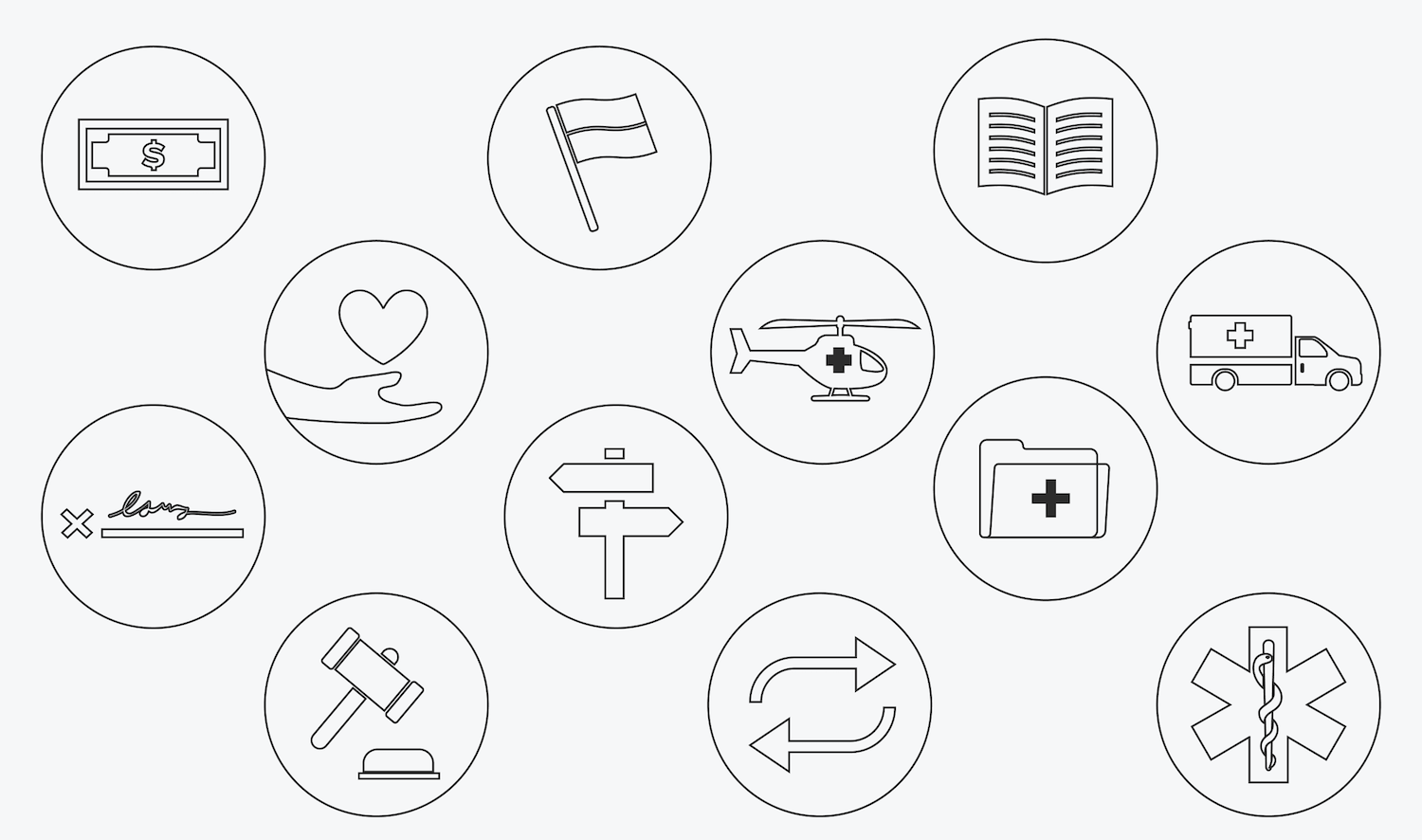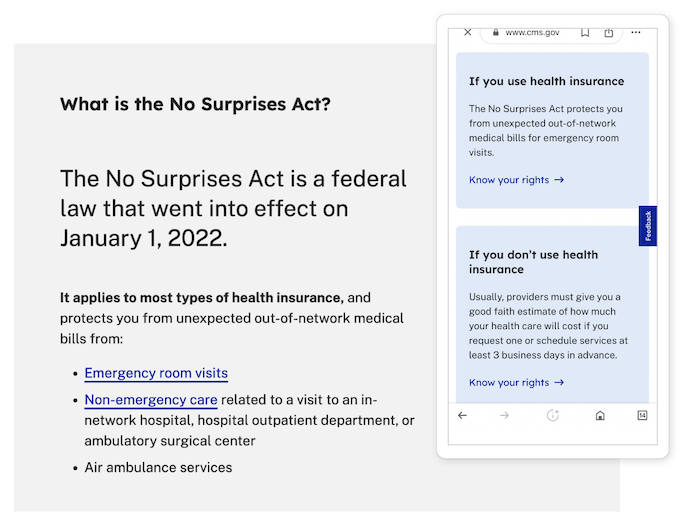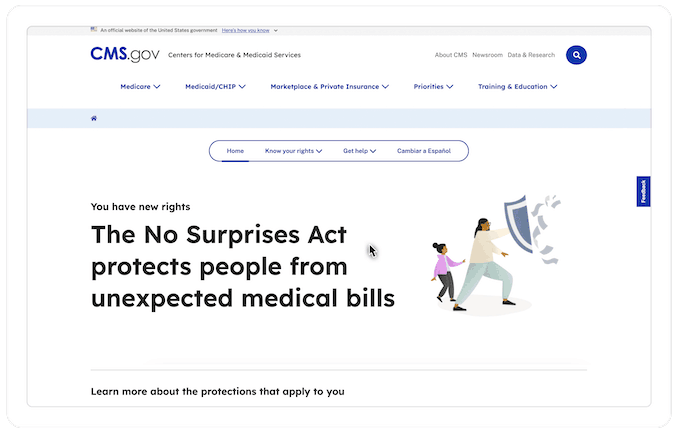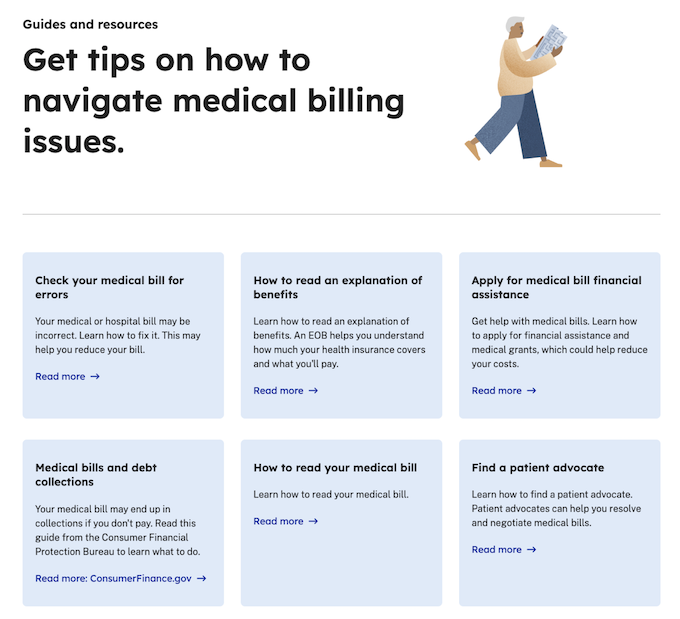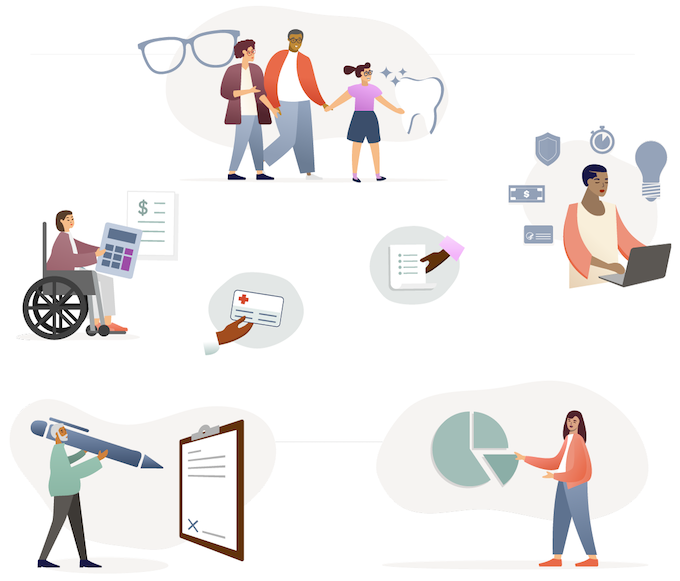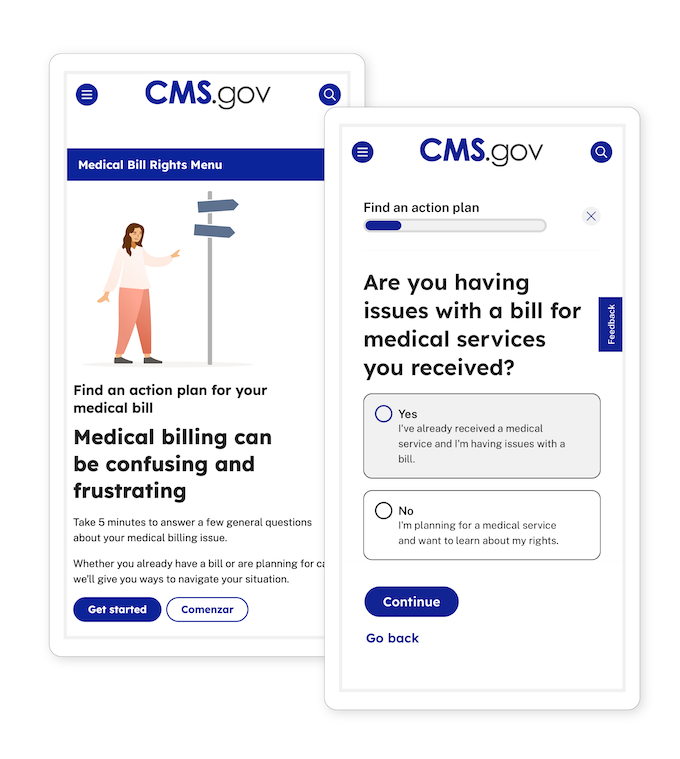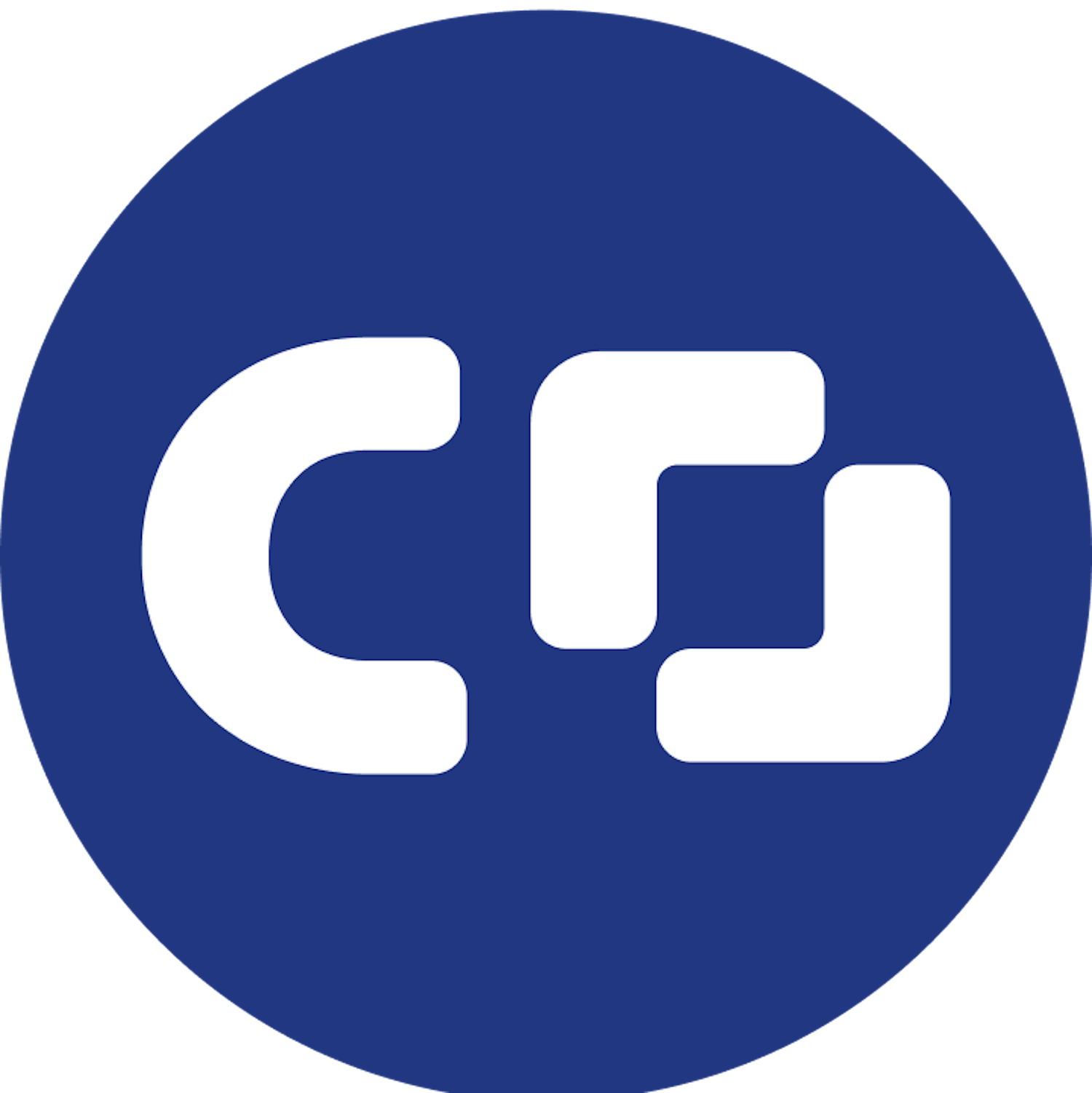The Challenge: Improve Website Accessibility and Systems Interoperability
- Client Name:
- Centers for Medicare & Medicaid Services
- Partner Name(s):
- Aquia; U.S. Digital Service; Ad Hoc; Digital Service at CMS
- Delivery Date:
- June 2023
The Centers for Medicare & Medicaid Services (CMS) wanted to improve the public’s customer experience with their website and enable people to understand and act on their new No Surprises Act protections.
US healthcare system patients have historically faced unexpected bills after receiving care or treatment from out-of-network providers in situations beyond their control. In what’s known as “surprise billing” or “balance billing,” healthcare providers and facilities don’t disclose known, out-of-pocket costs with patients ahead of urgent care or a scheduled visit or procedure and instead send them follow-up bills for the remainder of what hasn’t been paid by their insurance company or otherwise. Surprise medical bills can happen to patients with or without insurance. The average costs of these bills ranged from $750 to $2,600 per event.
Fortunately, the No Surprises Act, passed in 2020 and implemented in 2022, established patient protections, creating the opportunity to address medical bill affordability challenges and change the patient experience to bring about the end of surprise medical bills.
To satisfy the Act’s requirements, CMS needed to quickly update its systems to receive, store, process, adjudicate, and present information related to cases, complaints, costs, and more. To help CMS achieve the complex requirements, Team Coforma applied human-centered design (HCD) research methodologies, evaluative research techniques, content design and plain language best practices, bilingual translation, product and systems design, usability testing, and cross-functional development to bridge user needs with the legislation’s unique requirements. The result was www.cms.gov/medical-bill-rights, a mobile-first, bilingual site that presents the public with digestible information and a “Find an action plan” tool–all with integrated forms and a scalable, maintainable back end that CMS could readily update in the future.
